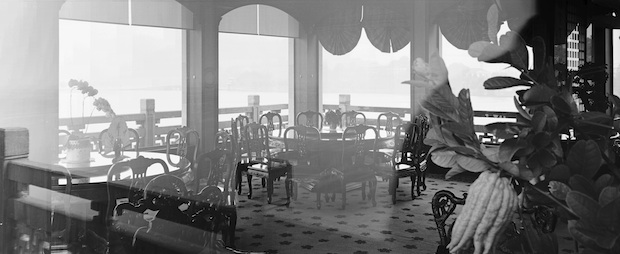|
|||||||||||
|
FEATURESCooking with TeaFuchsia Dunlop
Fuchsia Dunlop is a gourmand, writer and chef who specializes in Chinese cuisine. Trained as a chef at the Sichuan Institute of Higher Cuisine in Chengdu, she has written extensively on Chinese cuisine and food culture. A Letter from China that she published in The New Yorker was about the Dragon Well Manor 龙井草堂 restaurant run by Dai Jianjun 戴建军 at Dragon Well in Hangzhou. It is an essay that echoes this journal's interests in both West Lake and in tea. (For that essay, 'Garden of Contentment', see The New Yorker, vol.84, no.38: 54–61. For images of the restaurant, its setting, décor and cuisine, see here and here.) Fuchsia kindly gave China Heritage Quarterly permission to quote from her work for this issue, and we have chosen to reproduce a recipe for 'Junshan Chicken with Silver-needle Tea' 君山鸡片. It can be found in her 2006 book Revolutionary Chinese Cookbook, Recipes from Hunan Province,, London: Ebury Press, p.137.—The Editor The isle of Junshan lies amid the reeds of the Dongting Lake, and its beauty has been praised by Chinese poets since the Tang dynasty. We went there by boat on a misty day, and followed a path that twisted and turned through a forest of bamboo and bracken, the foliage yielding from time to time to plunging views of the rocks below. Birds cackled and twittered in the trees, and in the small clearings were neat terraced rows of tea bushes. The silver-needle tea (yin zhen cha) produced on the island is one of China's most famous, and was sent in tribute to the Qing dynasty emperors. It is a 'yellow tea', made by a long and delicate process that involves firing, heating over charcoal and gentle, enclosed oxidation. The dried leaves are pale and narrow, and covered in tiny white hairs. When infused in a glass, they hang vertically in the pale golden liquid, and sometimes gently rise and fall.  Fig.1 The Hupanju Teahouse, Hangzhou (Photograph: Lois Conner)
The following dish is a local banquet delicacy that is made with Junshan silver-needle tea, although any good Chinese green tea can be used as a substitute. The key to success is not to overheat the oil, so the chicken slices remain very tender and slippery, and so you can appreciate the delicate fragrance of the tea.
Link: |